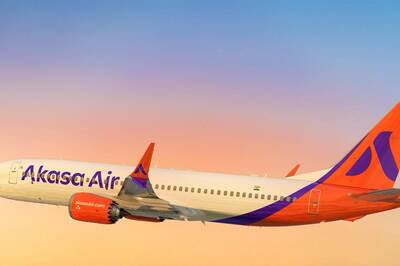
views
Passengers aboard the Asiana Airlines plane that crashed in San Francisco were initially told not to evacuate the aircraft after it skidded to a halt on the runway, a federal safety official said on Wednesday.
But a flight attendant saw fire outside the plane, and the call to exit was made, 90 seconds after the crash, said National Transportation Safety Board Chairwoman Deborah Hersman at a San Francisco press conference. The first emergency response vehicles arrived 30 seconds later.
The Saturday crash of the Boeing 777 killed two and injured more than 180.
In her fourth media briefing on the accident, Hersman said three flight attendants and their seats were ejected from the plane after it hit a seawall in front of the runway and lost its tail section. Two other flight attendants were temporarily pinned inside the cabin when two different evacuation chutes deployed inside the aircraft.
Hersman noted that an immediate evacuation is not always the standard procedure or the correct decision for pilots to make. "The pilots indicated that they were working with aircraft control," she said. "We don't know what the pilots were thinking but I can tell you that in previous accidents there have been crews that don't evacuate. They wait for other crews to come," she said.
Safety rules require that it be possible to evacuate all passengers from a plane in a 90-second period.
According to interviews with six of the 12 flight attendants on board, there was at first no fire inside the plane, Hersman said. But as the evacuation proceeded fire began to break out in the interior and was fought by flight attendants with fire extinguishers even as emergency personnel began to arrive.
Six flight attendants remain hospitalized and have not yet been interviewed. Asiana Airlines briefly introduced the other six flight attendants at a separate press event. The attendants have been praised as heroes who pushed for the evacuation and helped passengers out of the smoking plane.
Hersman also said that one of the pilots reported being blinded by a flash of light when the plane was 500 feet (152 meters) off the ground as it approached the airport. She offered no theory as to what might have caused such a flash.
Hersman said further analysis of the plane's auto-pilot system and automated throttle control were necessary to understand what the pilots did in the final moments of flight.
The pilot in charge of the plane told the NTSB that he was relying on the throttle control to keep the plane at its proper speed and failed to recognize that the aircraft had slowed dramatically as it approached the runway, Hersman had said on Tuesday. The slow speed was a key cause of the crash.
Hersman again stressed that even if an electronic control system had malfunctioned, the pilots should still have been able to land the plane safely.
"There are two pilots in the cockpit for a reason," she said, and they are responsible for monitoring all aspects of flight, including critical variables like air speed.
The role of increasingly sophisticated electronic control systems on passenger jets - and whether they may be breeding complacency among pilots - was already the subject of fierce debate in the aviation community, and the issue is likely to gain new urgency in the wake of the Asiana crash.

















Comments
0 comment